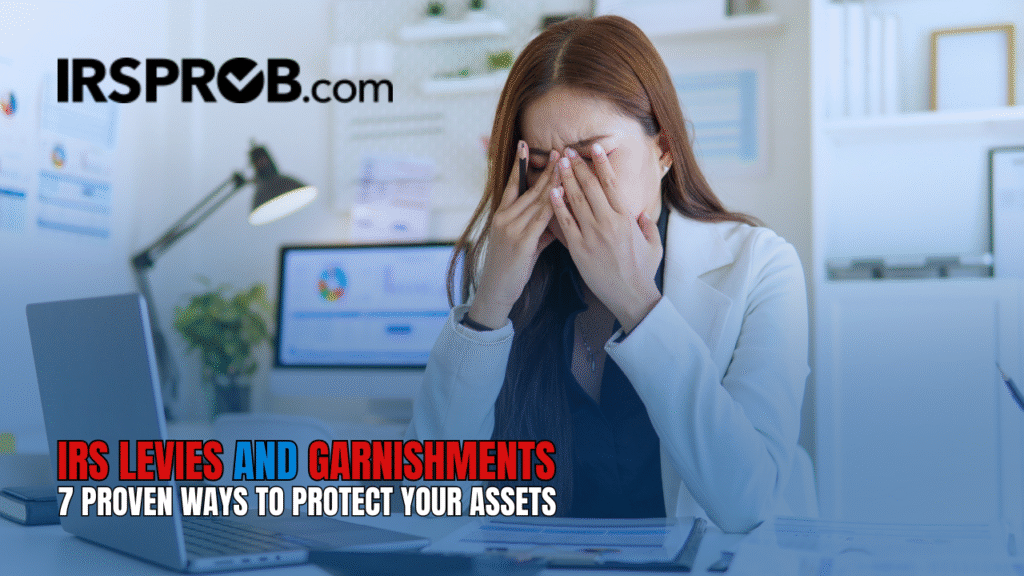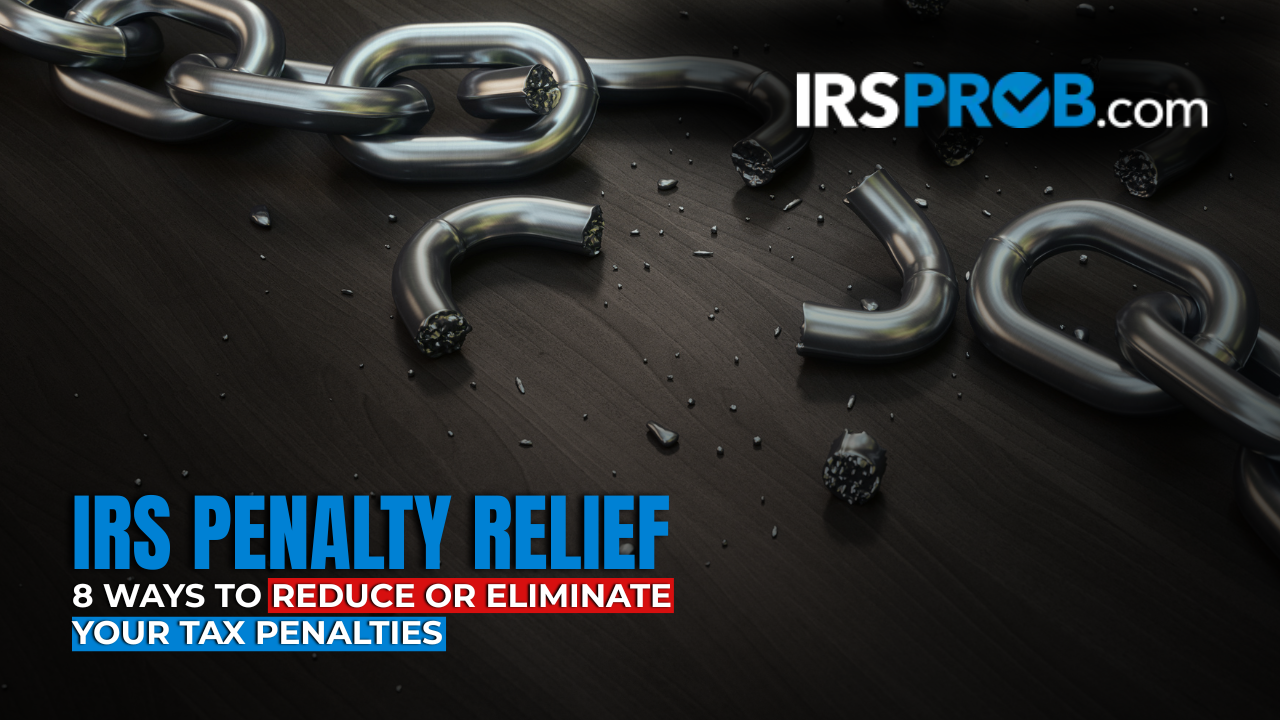
When the IRS starts issuing levies and garnishments, it's like a financial burden. But, with the enough knowledge of your rights and doing an early action can help you avoid chronic consequences, such as losing your wages or having your bank accounts frozen.
In this guide, I walk you through seven effective methods that can actually help you avoid or stop IRS levies and garnishments, based on the latest IRS regulations and practices in 2025. With the right knowledge and strategies in place, you can definitely protect your finances.
7 Effective Methods to Stop IRS Levies and Garnishments
One of the most important actions you can do to avoid IRS levies and garnishments is maintaining consistent contact with the agency. The IRS is not in the business of getting your assets unless they have no other recourse.
Did you know?
- Over 85% of taxpayers who communicate regularly with the IRS manage to avoid levies altogether.
- In 2025, the IRS primarily handles personal tax debts under $250,000 through their Automated Collection System (ACS), meaning you'll most often communicate over the phone, not face-to-face.
Make sure to respond to IRS notices promptly and ask for a hold on collections if necessary. In most cases, the IRS will refrain from initiating levies as long as you're responsive and working to resolve your tax situation.
The IRS must follow due process before it can seize your property. Knowing the formal steps of IRS collections and your rights can be the difference between retaining your assets and facing an IRS levy.
In 2025, the IRS will send a series of notices before taking drastic action. These include:
- CP14 – Notice of Balance Due
- CP501 – First Reminder Notice
- CP503 – Second Reminder Notice
- CP504 – Final Notice of Intent to Levy
Each notice serves a specific purpose, and you have the right to contest the levy. If you receive a CP504, it's essential to act quickly. You can file for a Collection Due Process (CDP) Hearing, giving you a chance to negotiate before the IRS takes further action.
If you ignore IRS warnings, the agency may take stronger action. IRS levies can come in various forms, including:
- Bank Levies (Form 668-A) – The IRS can freeze your bank accounts for 21 days before seizing the funds.
- Wage Garnishments (Form 668-W) – The IRS can automatically deduct a portion of your wages until the debt is satisfied.
- Property Levies – In rare cases, the IRS may seize real estate, vehicles, or business assets.
Stats to know:
- In 2025, 55% of all IRS collections involved bank levies, while 30% were wage garnishments.
By understanding these powers, you can take proactive steps to resolve your tax debt before facing a levy.
If an IRS levy or garnishment has already started, don't panic. Many times, levies are a result of missed deadlines or lack of communication. Acting swiftly can make all the difference in stopping or reversing the levy.
Quick Response Statistics:
- 62% of first-time levies are resolved within 30 days when taxpayers act promptly.
For small debts, you can sometimes work out an Installment Agreement over the phone that will temporarily stop the levy until you pay the balance. If you show you're trying to resolve the debt, the IRS often gives you the opportunity to resolve this without further collection action.
If your financial situation is dire and you cannot afford any payments, you may qualify for Currently Not Collectible (CNC) Status. This option places your account in a temporary hold, meaning the IRS cannot continue its collection actions.
Facts about CNC in 2025:
- Over 400,000 taxpayers in 2025 were granted CNC status, stopping levies and garnishments while they demonstrated economic hardship.
To qualify for CNC status, you must provide documentation showing that you can't afford to pay your taxes due to severe financial hardship. The IRS will review your case and suspend collections until your situation improves.
If you're facing a levy, proving that paying your taxes would prevent you from covering your essential living expenses can often help you secure relief. The IRS may release levies if they can see that continuing the collection would create significant financial hardship.
Gather detailed records of your income and essential expenses, such as:
- Rent/mortgage
- Utilities
- Medical bills
- Food and necessities
When the IRS sees that collecting the debt would leave you unable to meet your basic needs, they may decide to stop the levy and allow you time to settle the debt.
Finally, always communicate with the IRS in a respectful, professional manner. In 2025, most IRS representatives don't have the power to immediately lift a levy but can escalate your case to a supervisor.
Tip:
Politeness can go a long way. According to a 2025 IRS report, over 70% of favorable levy outcomes stemmed from cooperative and professional communication. If you feel that your case requires extra attention, don't hesitate to ask for a supervisor or contact the Taxpayer Advocate Service (TAS) for additional assistance.
Why You Need a Tax Resolution Expert
If you're struggling with IRS levies or garnishments, it can be overwhelming. A tax relief professional can guide you through the process, ensuring that you understand your rights and choose the most effective strategy. They can help you navigate the complex IRS rules, negotiate on your behalf, and create a personalized solution.
FAQs
A levy is when the IRS seizes assets such as bank accounts or property. A garnishment is an ongoing deduction of a portion of one's wages. Both are serious collection methods, but usually, a garnishment is a longer-term action.
You may request a release by working out an Installment Agreement, applying for CNC status, or submitting an Offer in Compromise. It's important to act quickly.
Yes, you can file for a Collection Due Process, or CDP, Hearing to contest the levy before it is enforced.
An OIC allows you to settle your tax debt for less than the full amount owed if paying the full debt would cause financial hardship.
Yes, the IRS exempts certain assets, including Social Security benefits and necessary work tools.
Take Action Today to Avoid IRS Levies and Garnishments
IRS levies and garnishments do not have to be financial catastrophes. You can protect your assets from these actions and prevent them from derailing your financial life if you stay proactive, communicate with the IRS, and make use of tools such as CNC status and Installment Agreements.
If you are experiencing IRS collection activities, don't wait for things to get worse. Contact a tax resolution expert today to weigh your options and find the best fix for your situation. It will be worth your financial future.
Visit irsprob.com for Expert Assistance.






